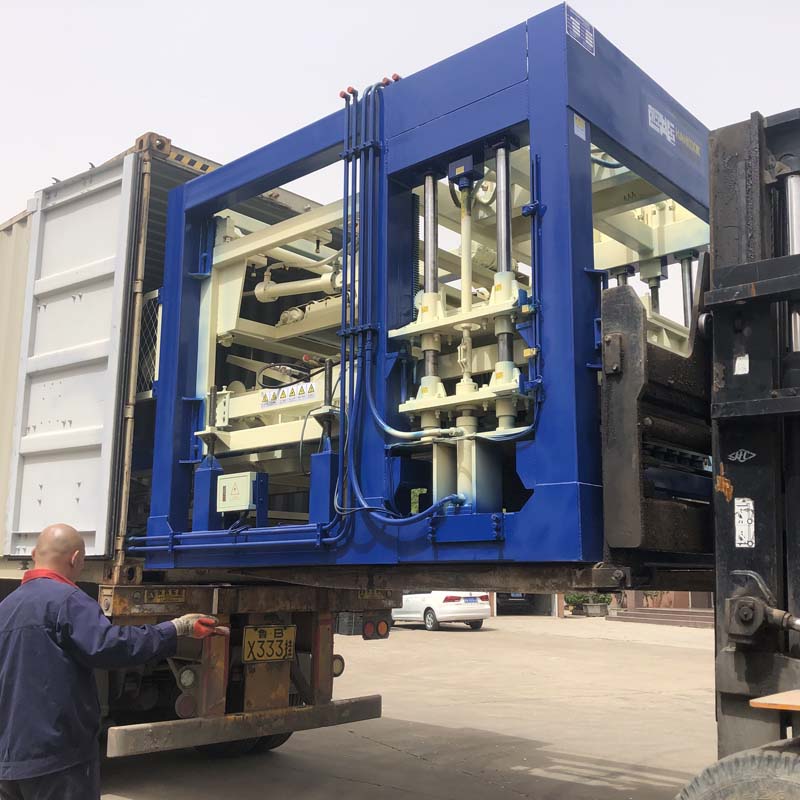
Image source :Aiweiblockmachine
Quality Control Protocols in Full-Automatic Block Production
Quality control in full-automatic block production is essential to ensure that the manufactured blocks meet the required standards and specifications. Implementing robust quality control protocols is crucial for maintaining consistency, preventing defects, and producing durable and reliable building blocks. Here are key quality control protocols for full-automatic block production:
### 1. **Raw Material Inspection and Testing:**
– **Material Composition Analysis:**
Conduct regular analyses of raw material compositions, including aggregates, cement, and additives. Ensure that materials meet specified standards and are consistent with approved formulations.
– **Moisture Content Monitoring:**
Monitor and control the moisture content of raw materials. Variations in moisture can significantly impact the quality of the final blocks. Implement measures to adjust material handling and mixing processes based on moisture levels.
### 2. **Automated Material Handling Systems:**
– **Calibrated Batching Systems:**
Calibrate and regularly check the accuracy of batching systems to ensure precise measurements of raw materials. Automated systems should consistently deliver the correct proportions, contributing to uniform block quality.
– **Robotics and Conveyor Inspection:**
Regularly inspect and maintain robotic arms and conveyor systems. Ensure that they operate smoothly and transport materials without causing segregation or contamination.
### 3. **Molding and Compaction:**
– **Precision Molding Techniques:**
Utilize precision molding techniques, such as hydraulic and vibration technology, to ensure uniform block density and shape. Regularly inspect molds for wear and tear, and replace them as needed to maintain consistency.
– **Compaction Monitoring:**
Implement sensors and monitoring systems to assess the effectiveness of the compaction process. Adjust compaction parameters based on real-time data to achieve the desired block strength and durability.
### 4. **Quality Assurance in Block Formation:**
– **Automated Block Inspection Systems:**
Integrate automated vision systems to inspect the quality of blocks as they are formed. These systems can detect defects, deviations in size, and other anomalies, allowing for immediate corrective action.
– **Dimensional Accuracy Checks:**
Conduct periodic checks to ensure the dimensional accuracy of the blocks. Automated systems can measure block dimensions precisely, ensuring that they meet the specified tolerances.
### 5. **Curing Process Control:**
– **Temperature and Humidity Monitoring:**
Monitor and control the curing environment, including temperature and humidity levels. Automated systems can regulate curing conditions to optimize block strength development and prevent surface defects.
– **Curing Time Optimization:**
Implement data-driven approaches to optimize curing times. Analyze historical data and performance metrics to adjust curing durations based on material characteristics and ambient conditions.
### 6. **Quality Control Testing:**
– **Comprehensive Strength Testing:**
Conduct comprehensive strength testing on a representative sample of blocks. This includes compressive strength tests to ensure that the blocks meet or exceed the specified strength requirements.
– **Density and Absorption Testing:**
Perform density and absorption tests to assess the structural integrity and durability of the blocks. These tests help identify issues related to compaction and curing processes.
### 7. **Real-Time Data Analysis and Reporting:**
– **Data Logging and Analysis:**
Implement real-time data logging for key parameters such as material composition, machine settings, and quality control metrics. Analyze this data to identify trends, patterns, and potential issues.
– **Automated Reporting Systems:**
Develop automated reporting systems that provide regular updates on production metrics and quality control results. This facilitates quick decision-making and timely corrective actions.
### 8. **Employee Training and Documentation:**
– **Training Programs:**
Train machine operators and quality control personnel on the importance of quality control measures and procedures. Ensure that employees are skilled in identifying and addressing quality-related issues.
– **Documentation of Procedures:**
Document all quality control procedures, including inspection checklists, testing protocols, and maintenance schedules. Maintain detailed records to facilitate traceability and accountability.
### 9. **Continuous Improvement Initiatives:**
– **Root Cause Analysis:**
Implement root cause analysis for any quality issues or deviations. Identify the underlying causes and implement corrective and preventive actions to address them.
– **Feedback Loops for Process Optimization:**
Establish feedback loops between quality control findings and the production process. Use this information to continuously optimize machine settings, material handling, and other parameters.
### Conclusion:
Quality control in full-automatic block production is a multifaceted process that involves meticulous attention to every stage of manufacturing. By integrating automated systems, real-time monitoring, and comprehensive testing protocols, manufacturers can ensure the production of high-quality, durable blocks that meet industry standards and customer expectations. Continuous improvement and adherence to quality control protocols are paramount for the long-term success of full-automatic block production facilities.
